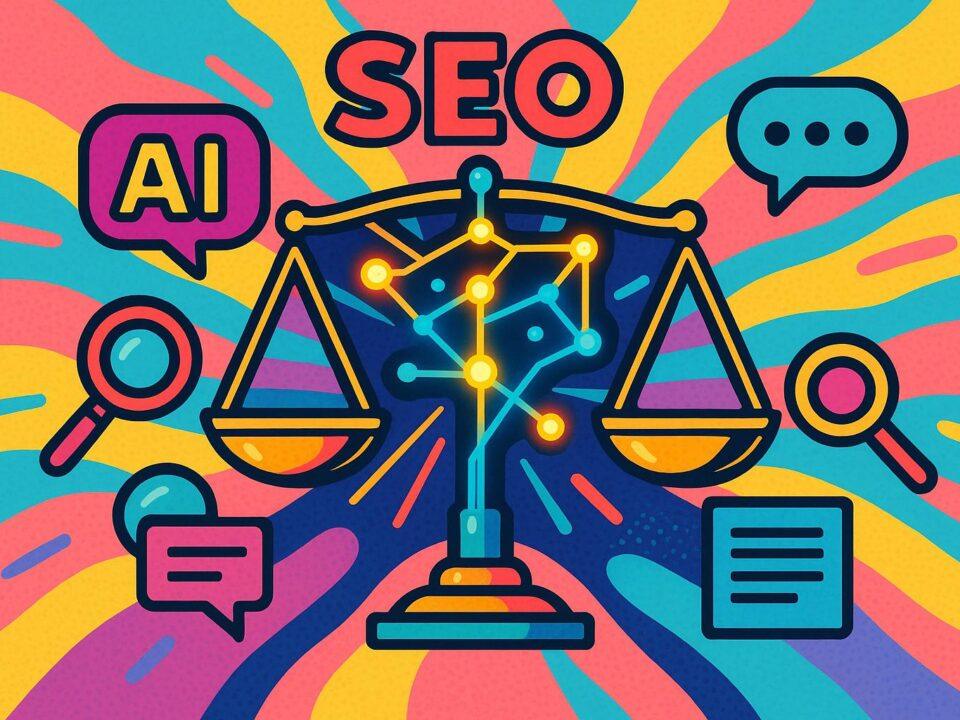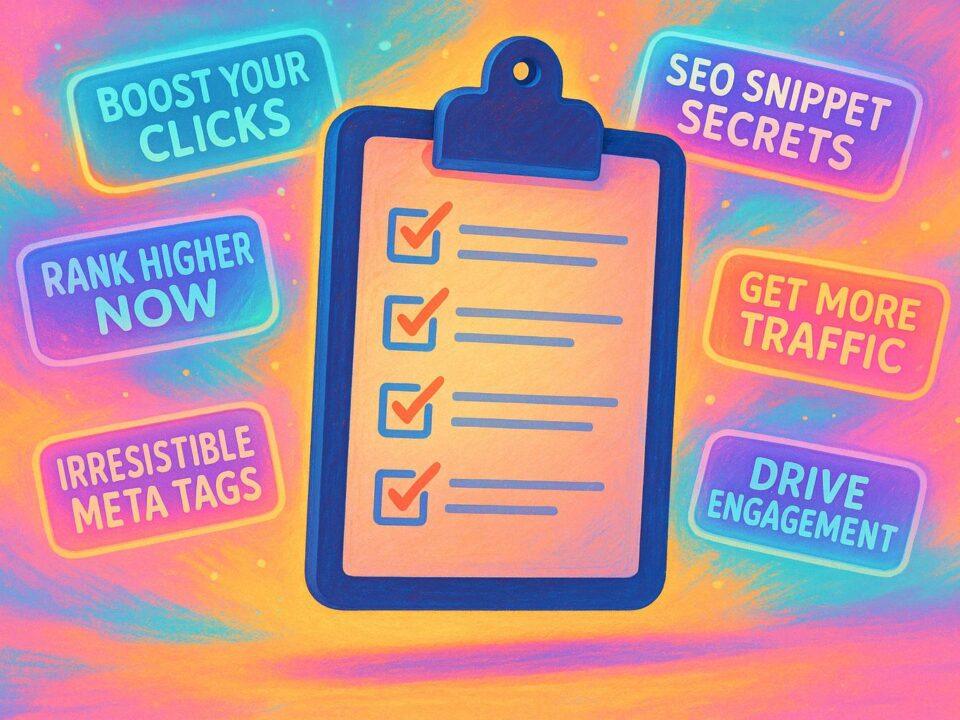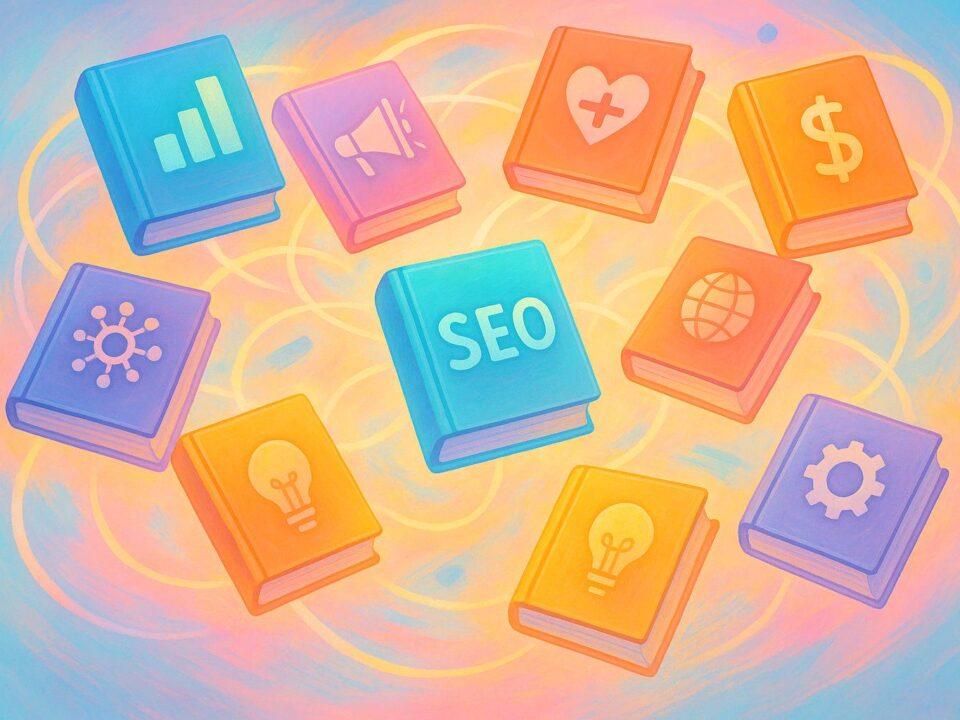Should you focus on SEO, PPC, or both? Here’s the quick answer:
- SEO is a long-term strategy that improves your website’s organic visibility. It takes time (4–12 months) but builds lasting traffic and credibility without ongoing ad spend.
- PPC delivers instant visibility by placing paid ads at the top of search results. It’s ideal for fast results but requires continuous funding to maintain traffic.
Quick Overview
- SEO Benefits: Long-term traffic, lower costs over time, builds trust.
- SEO Drawbacks: Slow results, sensitive to algorithm changes, complex to implement.
- PPC Benefits: Instant traffic, precise targeting, full control over ads.
- PPC Drawbacks: Expensive, traffic stops without budget, requires expertise.
Quick Comparison
| Feature | SEO | PPC |
|---|---|---|
| Time to Results | 4–12 months | Instant |
| Cost Structure | One-time setup + upkeep | Pay per click |
| Traffic Duration | Long-term | Stops when budget ends |
| Search Placement | Organic results | Top of search results |
| Targeting | Keywords, search intent | Demographics, location, etc. |
| ROI Timeline | Gradual, long-term | Immediate, trackable |
| Control | Limited over rankings | Full control over ads |
Best Approach? Use both: Test keywords with PPC while building long-term SEO traffic. Together, they strengthen your online presence and reduce risks.
What SEO and PPC Mean
Understanding SEO
SEO focuses on increasing organic search visibility by improving a website’s ranking in search engine results. This is achieved through tried-and-tested techniques. For example, Ahrefs‘ blog ranks for more than 95,000 keywords and attracts around 419,000 monthly visits [3].
Some popular tools used for SEO include:
- SEMrush: Ideal for analyzing competitors and keywords.
- Answer the Public: Helps identify questions users are asking.
- Similarweb: Offers insights into website traffic and user behavior.
Unlike SEO, which takes time to show results, PPC provides instant visibility.
Understanding PPC
PPC (Pay-Per-Click) advertising drives traffic by purchasing visits, where advertisers pay a fee for each click [1]. A typical PPC campaign involves several elements:
- Keyword Research: Focusing on terms with high intent.
- Bid Management: Setting maximum costs per click.
- Audience Targeting: Defining specific demographic groups.
- Ad Creation: Designing ads that encourage clicks.
Google’s responsive search ads have revolutionized PPC by allowing advertisers to create up to 15 headlines and four descriptions. These can generate over 30,000 variations, complete with built-in split testing capabilities [2].
3 Main Types of SEO
SEO can be divided into three key areas:
- On-Page SEO
Involves regularly optimizing content and keywords to improve relevance [3]. - Technical SEO
Focuses on aspects like crawling, indexing, site structure, load speed, mobile usability, URLs, and XML sitemaps. - FAQ Optimization
Targets user questions directly, aims for featured snippets, and aligns with voice search trends.
While tools play a crucial role in SEO, true success comes from blending data with strategic planning and expertise.
SEO vs PPC: Which Is Better for your Business in 2024?
SEO vs. PPC: Main Differences
SEO and PPC take very different approaches to driving traffic and achieving business goals. Both aim to boost visibility in search results, but they work on separate principles and timelines.
Side-by-Side Comparison
Understanding the main differences between SEO and PPC can help businesses decide where to focus their marketing efforts. Here’s a breakdown of how these two strategies compare:
| Feature | SEO | PPC |
|---|---|---|
| Time to Results | Takes 4–12 months to see noticeable results | Instant visibility once ads are live |
| Cost Structure | Requires an initial setup and ongoing upkeep | Pay for each click on your ad |
| Traffic Duration | Traffic continues after rankings are achieved | Traffic stops when ad budget runs out |
| Search Placement | Appears in organic results below ads | Shows at the top of search results |
| Targeting Options | Focused on keywords and search intent | Includes demographics, location, behavior, and interests |
| ROI Timeline | Grows over time with lasting benefits | Offers immediate, trackable returns |
| Control Level | Limited control over ranking factors | Full control over ad placement and targeting |
SEO offers long-term, sustainable traffic, while PPC provides instant results with a pay-to-play model. Both have their place depending on your goals and timeline.
SEO and PPC: Benefits and Drawbacks
A closer look at the pros and cons of SEO and PPC.
SEO Benefits and Drawbacks
| Benefits | Drawbacks |
|---|---|
| Lower long-term costs | Results take time |
| Consistent traffic over time | Sensitive to algorithm changes |
| Builds trust and credibility | Tough competition in many industries |
| Traffic persists after rankings are achieved | Implementation can be complex |
| Better ROI as paid ad costs increase | No guaranteed outcomes |
| Offers a competitive edge (not purchasable) | Requires ongoing effort |
“As paid clicks continue to get ever more expensive, smart SEO can provide an improved ROI over paid clicks.” – Marcus Miller, SEO & PPC consultant [2]
While SEO is a long-term strategy, PPC offers a faster route to visibility – though often at a higher cost.
PPC Benefits and Drawbacks
| Benefits | Drawbacks |
|---|---|
| Instant visibility | Requires ongoing budget |
| Highly precise targeting | Costs can escalate quickly |
| Full control over ad placement | Traffic stops when spending stops |
| Detailed analytics and tracking | Competitive bidding can be challenging |
| Geographic targeting options | Demands expert management for efficiency |
“PPC provides a laser-targeted way to get in front of potential customers… Organic traffic, by comparison, is far more scattershot.” – Marcus Miller, SEO & PPC consultant [2]
PPC campaigns are particularly effective for commercial keywords but can become expensive in competitive industries. Deciding between SEO and PPC comes down to balancing these pros and cons with your specific business goals.
Choosing Between SEO, PPC, or Both
Understanding the strengths and limitations of each method is key to deciding which one aligns with your business goals.
When SEO Works Best
SEO is ideal for businesses aiming for steady, long-term growth. For example, a small local business can thrive with DIY SEO if it only requires a handful of leads each week.
This approach is most effective if you have:
- More time than money to invest
- A strong, established presence in your market
- The ability to create content in-house
- Minimal competition in your industry or niche
When PPC Works Best
PPC is the go-to option when you need fast results and immediate visibility. It’s especially useful in scenarios like these:
| Business Scenario | Immediate Advantage |
|---|---|
| New Product Launches | Quick visibility in the market |
| E-commerce Stores | Compete directly with others |
| Time-Sensitive Promotions | Control over timing |
| Lead Generation Focus | Fast feedback on performance |
| Geographic Expansion | Test new markets quickly |
However, there are instances when using just one strategy might not cover all your needs.
Using SEO and PPC Together
Combining SEO and PPC can help you get the best of both worlds. Here are a few ways to make them work together:
- Test keywords with PPC: Paid campaigns can provide quick insights into which keywords drive engagement.
- Expand your reach: Use SEO to build local authority while PPC helps you break into new areas.
- Dominate search results: By appearing in both organic and paid listings, you can increase your visibility. For example, Semrush runs ads for “site audit” while also ranking at the top of organic search results for the same term [1].
“PPC provides a laser-targeted way to get in front of potential customers… Organic traffic, by comparison, is far more scattershot.” – Marcus Miller, SEO & PPC consultant [2]
Your choice between SEO, PPC, or a mix of both should depend on your business goals, timeline, and available resources. A clear marketing plan with short- and long-term objectives will help you strike the right balance.
Conclusion
Deciding between SEO and PPC comes down to your specific goals, resources, and timeline.
SEO is a long-term approach that helps grow organic traffic over time. It’s a great option for businesses with smaller budgets and the patience to build their online presence gradually. Once your site ranks well, the traffic keeps coming without additional costs.
PPC, on the other hand, delivers instant visibility and allows for precise audience targeting. It’s especially useful for campaigns that need quick results or for testing the waters in new markets. However, it requires ongoing spending to maintain visibility.
The best approach? Use both strategies together. As Marcus Miller puts it, “SEO and PPC work best when they are strategically aligned to work together” [2]. By combining them, you can test keywords with PPC, strengthen your organic presence, and reduce risks while collecting valuable customer insights.
Ultimately, SEO and PPC aren’t rivals – they’re complementary tools. Together, they provide a strong foundation for growing your online presence and achieving long-term success.







